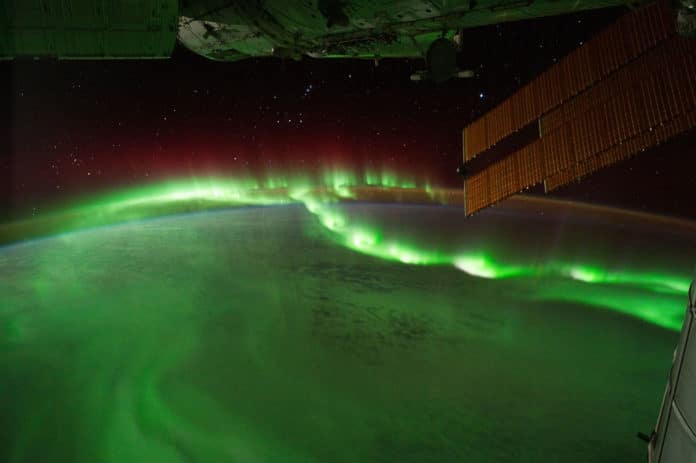An aurora is a colorful light show in the sky caused by the Sun. Auroras happen when particles from the Sun interact with gases in our atmosphere, causing beautiful displays of light in the sky.
A special type of aurora, draped east-west across the night sky, helps scientists better understand the science of auroras and their powerful drivers out in space. Known as auroral beads, these lights regularly appear not long before large auroral displays caused by electrical storms in space called substorms.
Previously, scientists weren’t sure if auroral beads are somehow connected to other auroral displays as a phenomenon in space that precedes substorms or caused by disturbances closer to Earth’s atmosphere.
NASA’s Time History of Events and Macroscale Interactions during Substorms—THEMIS—mission now has offered the first strong evidence of the events in space that lead to these beads’ appearance and demonstrated the vital role they play in our near-space environment.
Vassilis Angelopoulos, principal investigator of THEMIS at the University of California, Los Angeles, said, “Now we know for certain that the formation of these beads is part of a process that precedes the triggering of a substorm in space. This is an important new piece of the puzzle.”
By giving a more extensive picture than can be seen with the three THEMIS shuttle or ground observations alone, the new models have demonstrated that auroral beads are brought about by turbulence in the plasma—the fourth state of matter, comprised of gaseous and highly conductive charged particles—encompassing Earth.
The study is expected to ultimately help scientists better understand the full range of swirling structures seen in the auroras.
Evgeny Panov, a lead author on one of the new papers and THEMIS scientist at the Space Research Institute of the Austrian Academy of Sciences, said, “THEMIS observations have now revealed turbulences in space that cause flows seen lighting up the sky as of single pearls in the glowing auroral necklace. These turbulences in space are initially caused by lighter and more agile electrons, moving with the weight of particles 2000 times heavier, and which theoretically may develop to full-scale auroral substorms.”
By modeling the near-Earth environment on scales from tens of miles to 1.2 million miles, the THEMIS scientists were able to show the details of how auroral beads form.
David Sibeck, the THEMIS project scientist at NASA’s Goddard Space Flight Center in Greenbelt, Maryland, said, “There’s been a realization that all summed up, these relatively little transient events that happen around the magnetosphere are somehow important. We have only recently gotten to the point where computing power is good enough to capture the basic physics in these systems.”
Since scientists comprehend the auroral beads precede substorms, they need to make sense of how, why, and when they may trigger out and out substorms. From a certain perspective, the fingers may tangle magnetic field lines and cause an explosive event known as magnetic reconnection, notable for making full-scale substorms and auroras that fill the nightside sky.
In its prime mission, THEMIS was able to show that magnetic reconnection is a primary driver of substorms. The new results highlight the importance of structures and phenomena on smaller scales—those hundreds and thousands of miles across compared to ones spanning millions of miles.
Slava Merkin, a co-author on one of the new papers and scientists at NASA’s Center for Geospace Storms headquartered at Johns Hopkins University Applied Physics Laboratory in Laurel, Maryland, said, “To understand these features in the aurora, you need to resolve both global and smaller, local scales. That’s why it was so challenging up to now. It requires very sophisticated algorithms and very big supercomputers.”
The new computer simulations almost perfectly match THEMIS and ground observations. After the latest computer models’ initial success, THEMIS scientists are eager to apply them to other unexplained auroral phenomena. Particularly in explaining small-scale structures, computer models are essential as they can help interpret what happens in between the spaces where the three THEMIS spacecraft pass.
Journal References:
- K. A. Sorathia et al, Ballooning‐Interchange Instability in the Near‐Earth Plasma Sheet and Auroral Beads: Global Magnetospheric Modeling at the Limit of the MHD Approximation, Geophysical Research Letters (2020). DOI: 10.1029/2020GL088227
- Evgeny V. Panov et al. Understanding Spacecraft Trajectories Through Detached Magnetotail Interchange Heads, Journal of Geophysical Research: Space Physics (2020). DOI: 10.1029/2020JA027930
